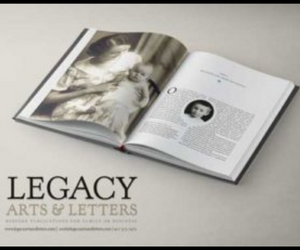Blood and Bone Marrow Transplantation
Imagine for a moment that you personally rescued someone from death. Imagine the joy and gratitude of the family and the good feeling you’d have the rest of your life.
Sound good? Dr. Chi Van Dang from Johns Hopkins Hospital has a way of doing this. You don’t have to be a fireman or a life guard to gain this kind of satisfaction.
Becoming a Bone Marrow Donor
Dang suggests that you become a bone marrow donor. Fortunately, you can do this while you’re still alive. And further, you won’t miss what you’ve donated because your body will replace it in a couple of days.
Dang hopes you’ll consider becoming a bone marrow donor because often a bone marrow transplant is the only hope that people with leukemia or other blood diseases have. Currently only about 70% of those who need it can get it, and the statistics are even less favorable for minorities.
Fortunately, becoming a donor is easier than you might think. “When most people think of transplantation,” Dang says, “they think that it’s cutting an organ out of someone and sewing it up in someone else. Bone marrow transplantation is different.”
With a bone marrow donation, they insert a needle into one of your hip bones and withdraw half a cup of liquid marrow. You have an anesthetic during the process so it’s painless.
Doctors take the liquid that they’ve withdrawn and infuse it into the veins of the patient much the way they might with an ordinary blood transfusion. “The cells go through the patient’s veins,” says Dang, “and find their way back into the patient’s bone marrow.” If the transplant is a success, your bone marrow cells would, as Dang puts it, “set up house,” and start growing new, healthy blood cells for the patient. When this happens, a patient who would otherwise have almost certainly died, can be restored to a full and active life.
Blood is an Organ
The term “organ donation” may seem strange when it’s applied to blood, but technically, blood is an organ just as much as a kidney or a liver. Blood has the distinction of being both the most active organ and the only one that migrates during an individual’s life.
It’s the most active because people make 200 times their weight in blood every year. And as for migrating, the cells that produce your blood have different locations at different times in your life.
According to Dang, when you were first conceived, the genetic pattern for your blood was contained in the yolk sac of the egg that produced you. As you developed in the womb, the cells that made your blood migrated to your liver.
The liver became the primary factory for producing the components of your blood, including your red cells, white cells, and platelets. An extraordinary transformation had taken place by the time you were born.
The cells that make blood had migrated from your liver to the hollow areas in your bones, particularly the long bones in your arms and legs. Finally, as you became an adult, almost all the cells that make blood became concentrated in your pelvic bones, ribs, and sternum. BLOOD AND BONE MARROW TRANSPLANTATION
Blood is an amazing organ. If you share it by becoming a bone marrow donor, you won’t miss it, but you’ll be giving life to someone who would otherwise lose theirs. To find out more about becoming a bone marrow donor, call the Marrow Foundation at: 1 800 Marrow2 and they’ll send you their information packet.
Search Blogs
Latest Posts
Ukraine’s Rare Metals Offer Rare Opportunities
https://www.wealthmanagement.com/alternative-investments/ukraines-rare-metals-offer-rare-opportunities Publication –wealthmanagement.com
Putin Resorts to Financial Smoke and Mirrors
https://cepa.org/article/putin-resorts-to-financial-smoke-and-mirrors/ Publication –cepa.org
Putin’s Weak Hand
https://cepa.org/article/putins-weak-hand/ Publication –cepa.org
The Game That Heals: How “The Remembrance Game” Provides Therapeutic Relief
https://foreignpress.org/journalism-resources/the-game-that-heals-how-the-remembrance-game-provides-therapeutic-relief Publication –foreignpress.org
Subscribe to Updates
About Author

Mitzi Perdue is the widow of the poultry magnate, Frank Perdue. She’s the author of How To Make Your Family Business Last and 52 Tips to Combat Human Trafficking. Contact her at www.MitziPerdue.com
All Articles
A Contrarian Investment that Could Be Just Right for You
A Contrarian Investment that Could Be Just Right for YouSuppose for a moment that you’re an investor. Not just any investor. In this case you are Peter Hughes. You are a real person, although in fact Hughes is not your real name. Here’s what’s going on with you,...
Knowledge Services: Crucial in Today’s Knowledge Economy
Knowledge Services: Crucial in Today's Knowledge EconomyIf you’re beautifully organized, you can quickly find all your documents when you need them. However, if you’re like most people, the frustration and lost time spent trying to locate a needed document can be...
A Family Book Can Be a Priceless Investment
A Family Book Can Be a Priceless InvestmentImagine something terrible for a moment. If you lost your memory, as in Alzheimer’s, you would have lost one of the most basic factors that makes you you. Without memory, you’d have trouble making good decisions; you’d no...
The Soft Issues Are Really the Hard Issues!
The Soft Issues Are Really the Hard Issues!If you’re part of a business family and you’re also a parent of a school age child, which would be easier for you to do? Be honest! Choice A: Have the Sex Talk with your child Choice B: Have the Money Talk with your child...
Trust: How to Nurture a Key Factor in Family Success
Trust: How to Nurture a Key Factor in Family SuccessTRUST: HOW TO NURTURE A KEY INGREDIENT FOR FAMILY SUCCESS What does it take to be a successful multi-generational family business? Dennis Jaffe, PhD is one of the best people to ask. For more than 40 years, he’s...
Women’s Leadership Styles: There’s a Lot to Learn!
Women's Leadership Styles: There's a Lot to Learn!Women in family businesses face a particular set of distinct challenges when it comes to leadership style. Heather Powell, a family business coach for women and couples, has an impressive track record of dealing with a...






